Although the superficial stuff like Instagrammable sights and delicious food is what drives us to visit a new place, witnessing a different culture and lifestyle is often what make the most treasured memories. Here are some thoughts that didn’t fit into any of the previous posts.
The Un-America
A couple times on this trip, Phil mentioned how the streets or transit seemed similar to South Korea. I thought it was funny because, when I travel, I often find myself comparing the destination to Taiwan. There’s no way Mexico or Spain share more common culture with East Asian countries than they do with the United States. So what’s going on?
A simple explanation is that, perhaps, we place our attention on whatever is different when we travel to a new place. Multiple foreign countries can seem similar by all being different from home. There might be some truth to this hypothesis, but it’s also a pretty lame way to see things.
The other explanation is that… perhaps the U.S. is the oddest country in the world. Most of our observations from Tokyo to Sevilla to CDMX have to do with how people live their lives in cities. From public transit outage to garbage collection, dense urban living anywhere has to embrace elements that are similarly foreign to the car-based detached-home lifestyle that has come to define America. It’s the sense of collective living and group-based solutions vs. the individual-centered world view where nobody shares anything with their neighbors.
One example: it rained when we were in Coyoacan waiting for our Uber. Naturally, we docked under the little cover at the front door of some random house. It immediately brought me back to my childhood where everyone did this in the rainy Taipei all the time. But such experience is extremely uncommon in the U.S. because, even in major cities, homes are considered such private and sacred places that they are separated from pedestrian sidewalks with front yards and fences. Although you technically could cross the yard and borrow a stranger’s porch for a few minutes, most Americans would consider it utterly unacceptable.
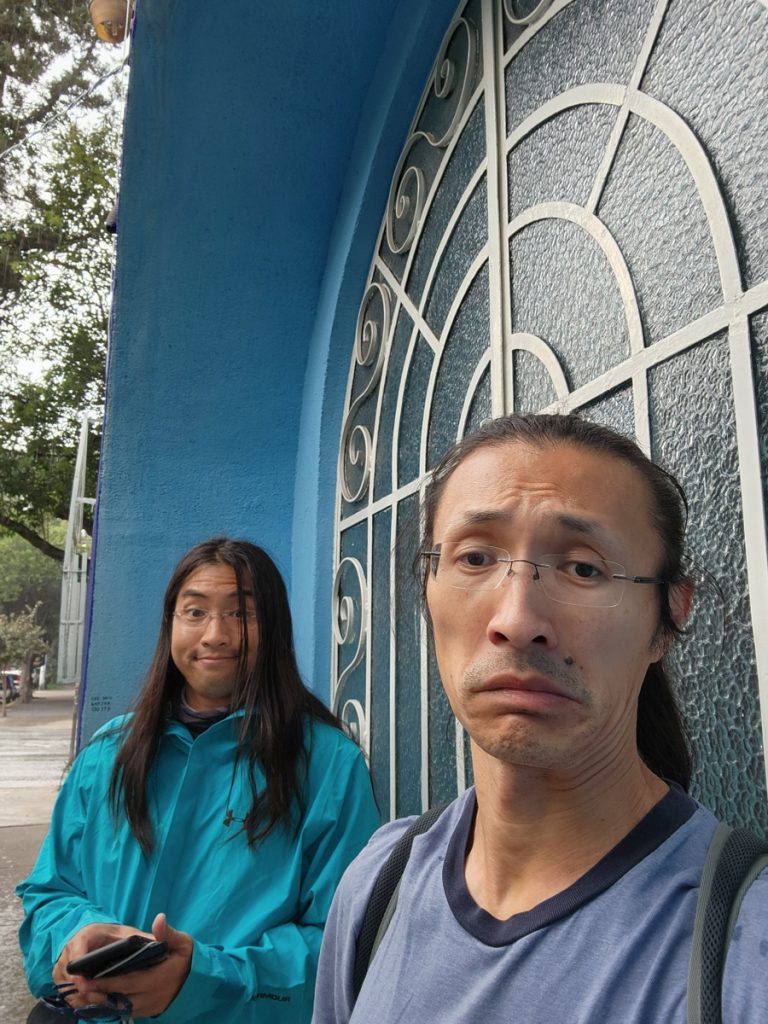
Is Mexico City Touristy?
News outlets recently reported that so many Americans now flooded CDMX that local residents wanted to kick us out. Upon closer examination, that seemed to be a claim that sensationalized a couple residential neighborhoods and their gentrification problems with remote American workers moving in. Throughout our visit, foreigners were few and far between. Even at the biggest attractions such as Teotihuacan, locals appeared to be the majority. CDMX was nowhere close to Venezia, Kyoto, or Bangkok in terms of tourist saturation, but could I be sure?
I found my proof at Starbucks. In the biggest store in the middle of the city, their “been there series” souvenir mugs were for Cancun, Cabos, Cozumel, and half a dozen other beach towns… but none for Mexico City itself. I guess there wasn’t a big enough tourist market for it?
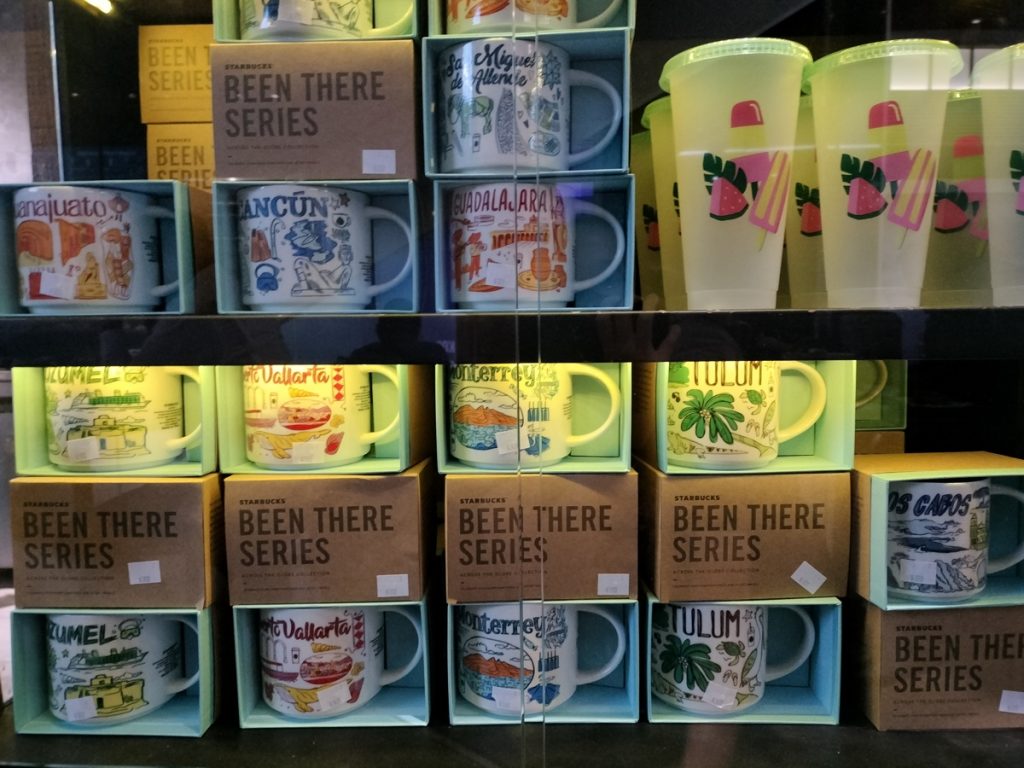
Language
This trip concluded 8 months of my fantastical thinking that I could brush up on my Spanish and make it useful on two vacations in 2022. Oh well, some day when work is no longer a distraction, maybe I’ll manage to learn it.
In the US, we usually hear that Mexico is a Spanish-speaking country with a different accent from Spain. I was completely oblivious to the fact that many other languages were also used in this country. In addition, like the U.S., Mexico did not have an official language. We encountered and struggled to pronounce a lot of Nahuatl-based words such as Huitzilopochtli (a god of particular significance to this city), caldo tlalpeno (a soup), huitlacoche (corn smut), and Juanacatlan (a subway station).
Still Art
The public space in CDMX was full of artwork. Sculptures centered in fountains, dotted in and around parks, lined major avenues, and anchored traffic circles. They came in all sizes and styles, too. Although every city had statues, especially in the western world, CDMX struck me as having a much higher concentration of them than I recall seeing anywhere else. Everyday we walked or drove by them constantly and the city just seemed like a giant art gallery.
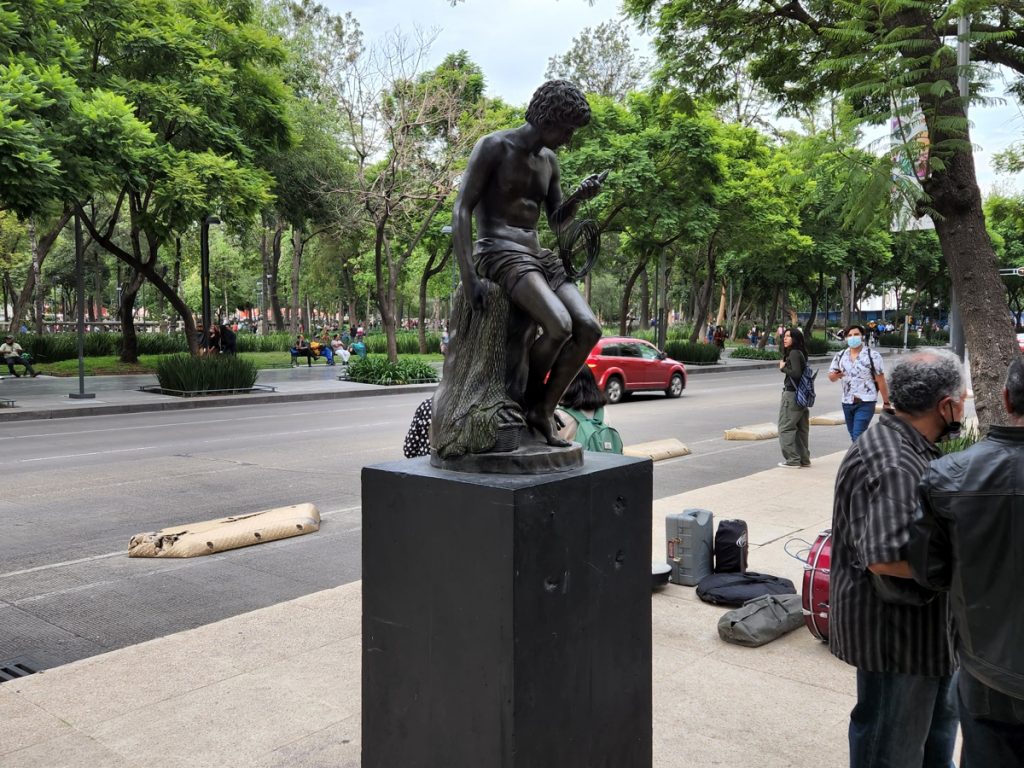
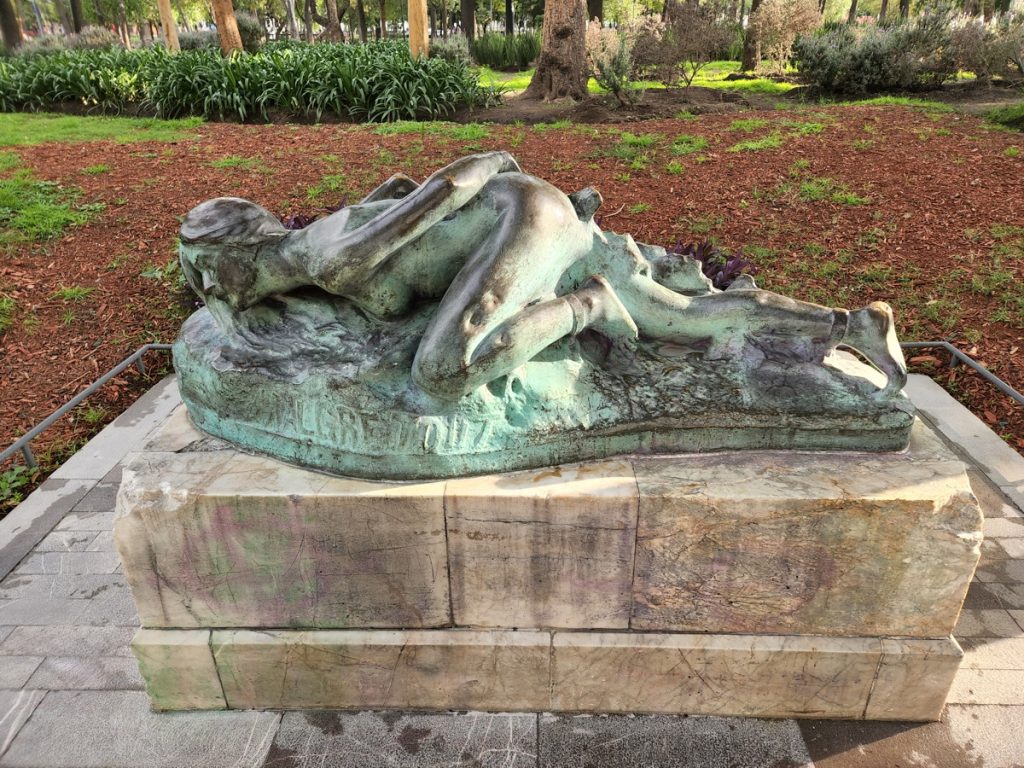
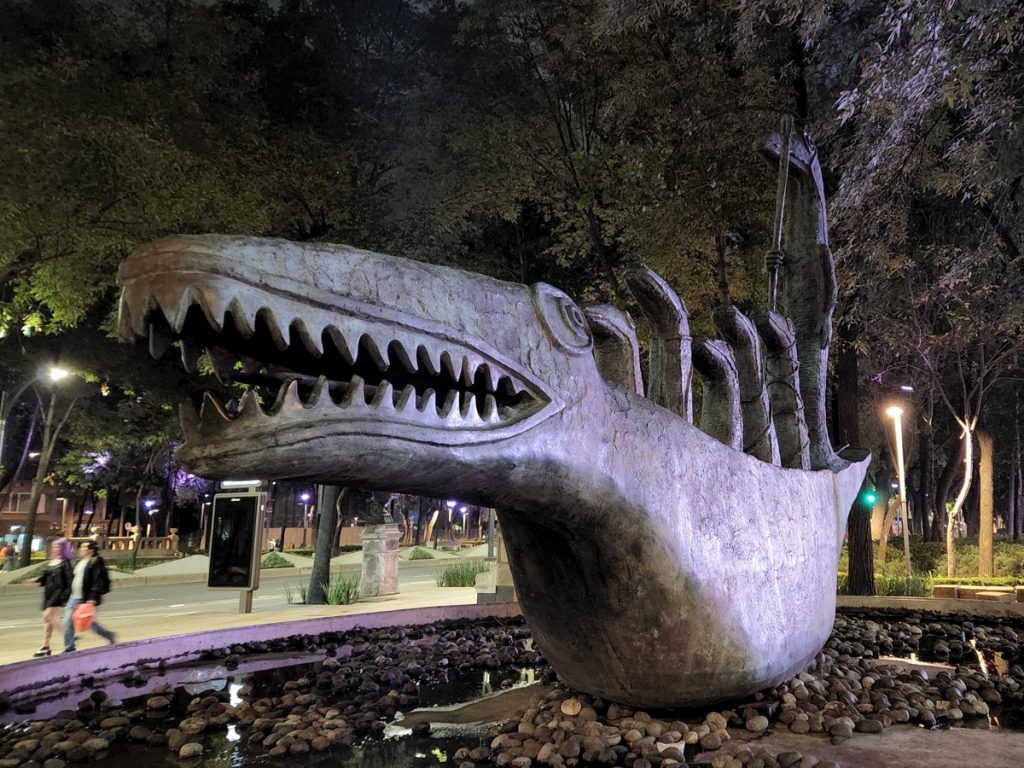
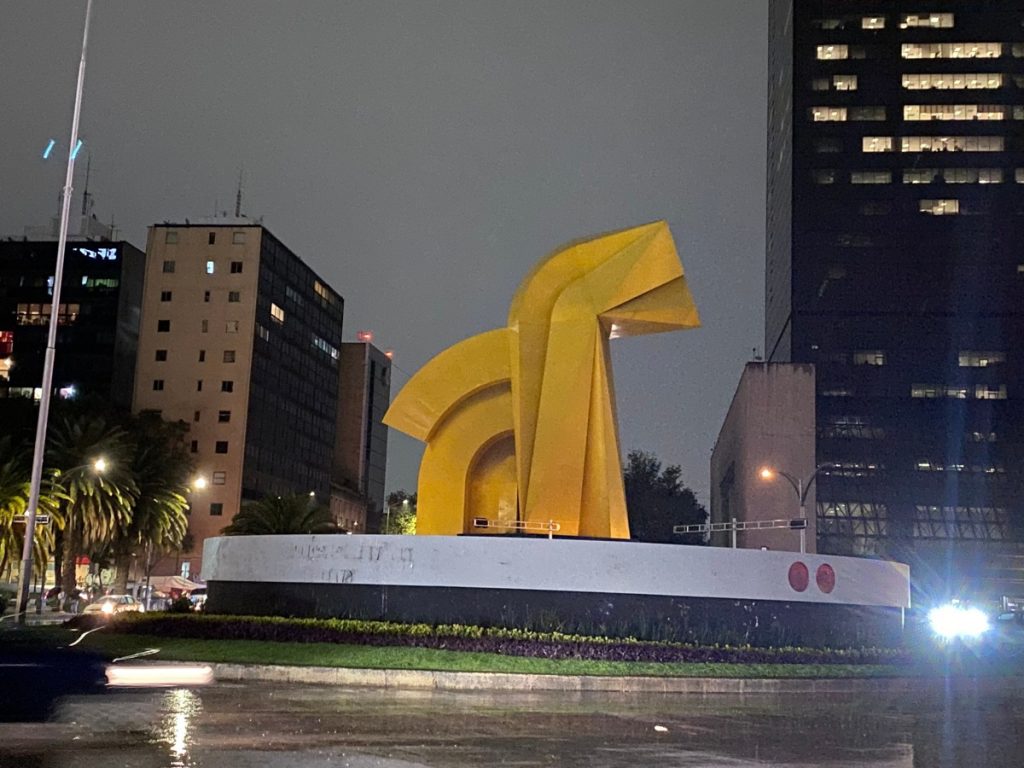
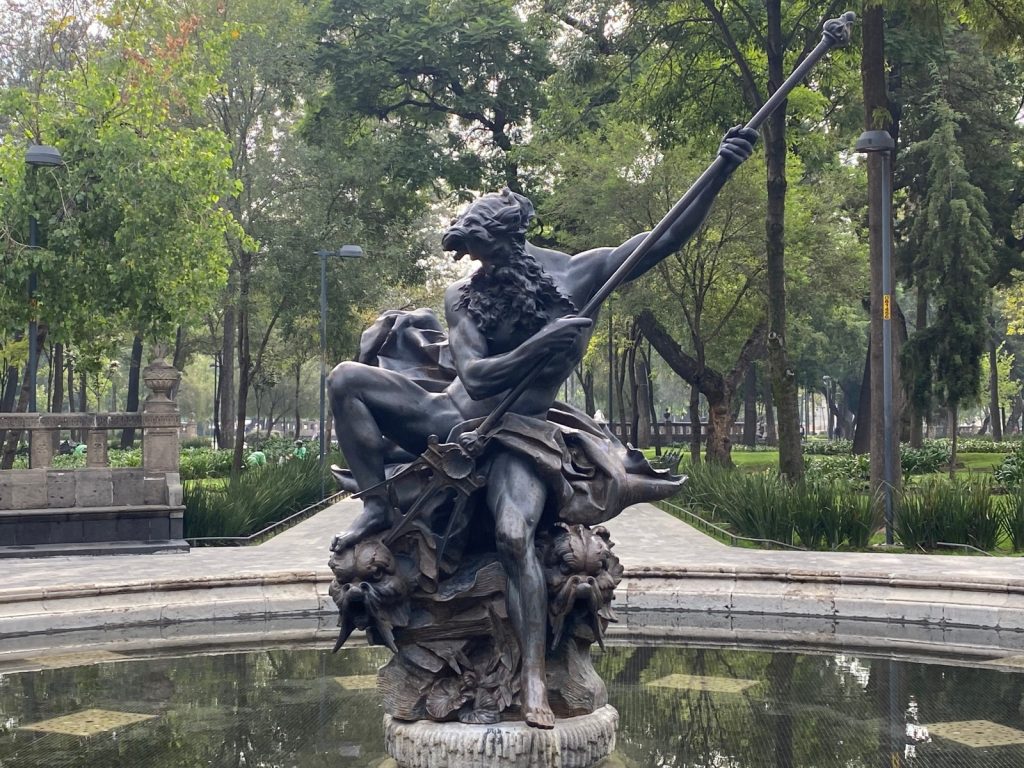
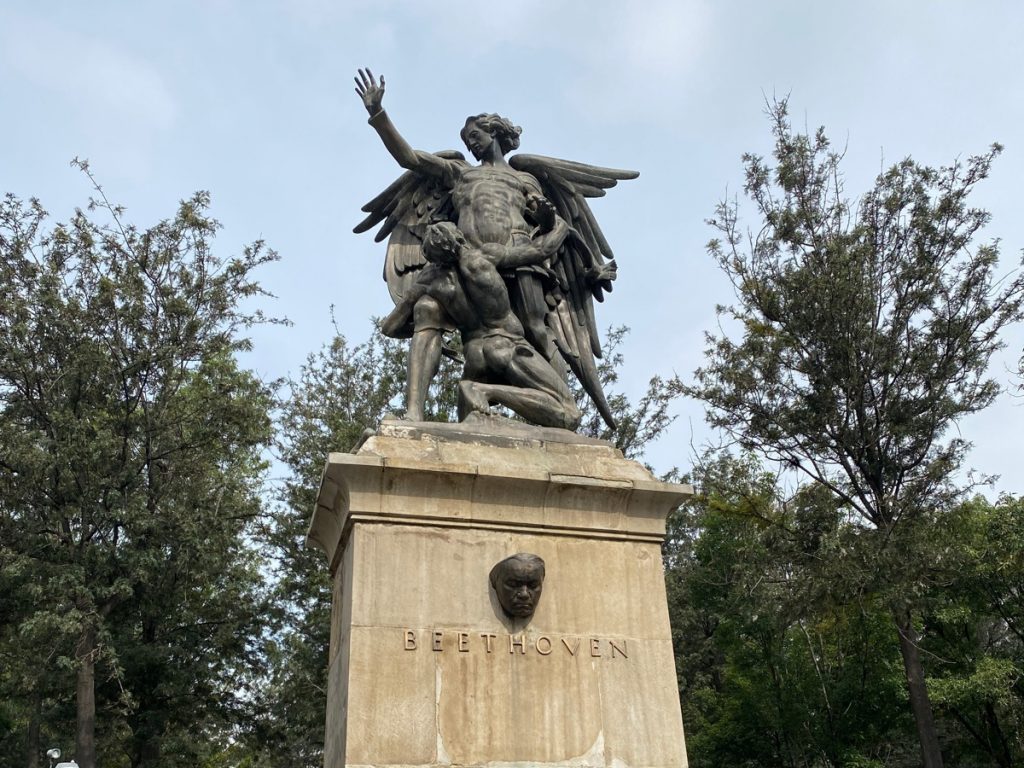
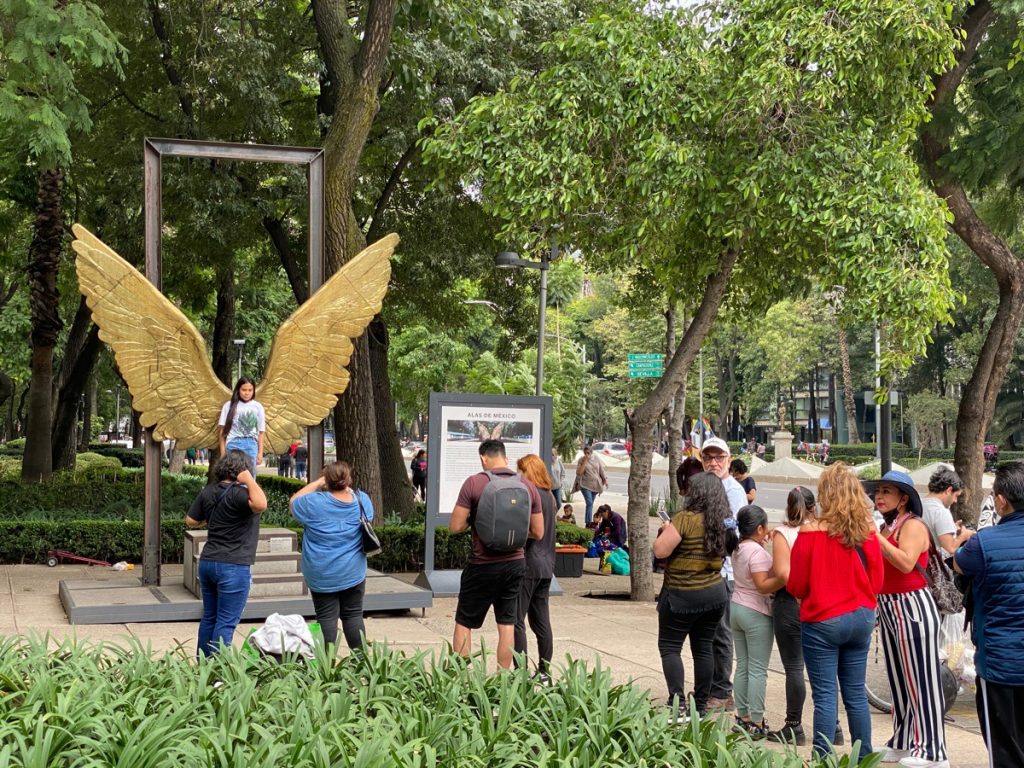
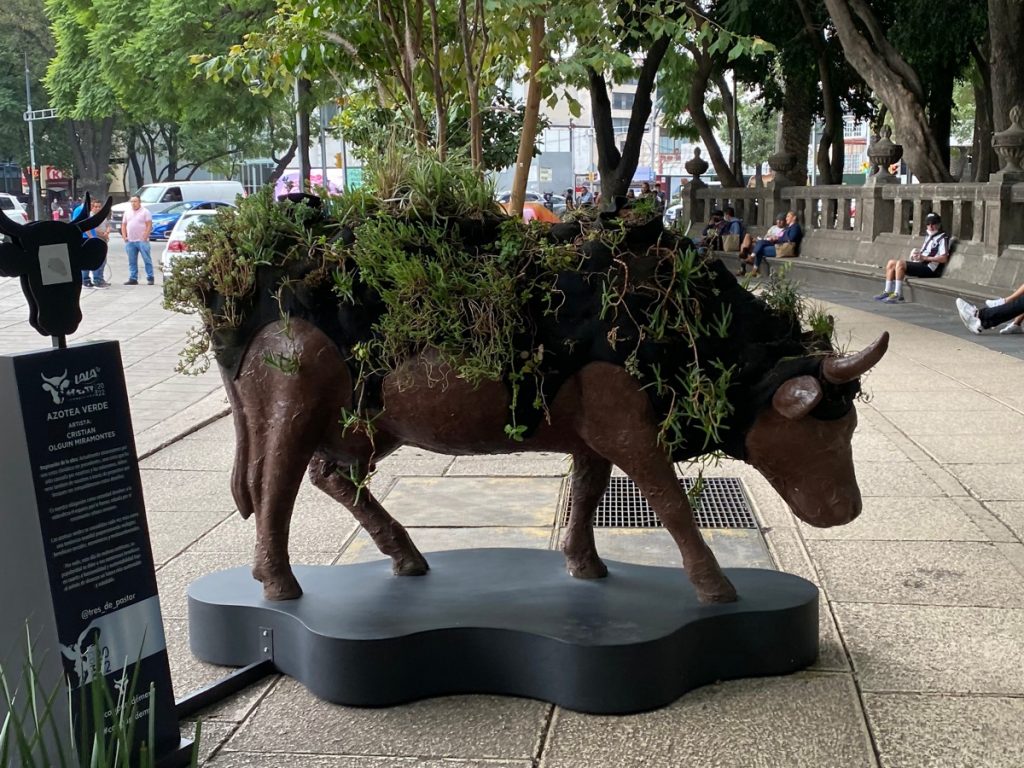
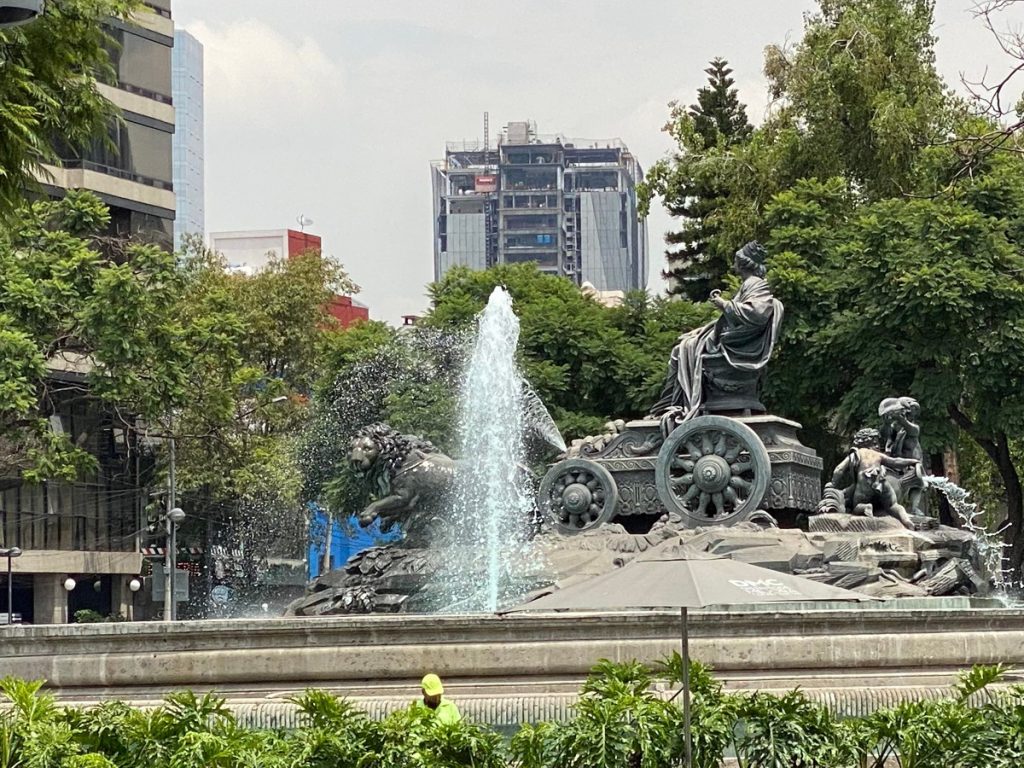
Performance Art
As would be expected in many population centers around the world, we saw quite a few performance artists singing, break dancing, or dressed up for photo ops. They were crowd pleasers and the Mexican people appeared generous with their donations.
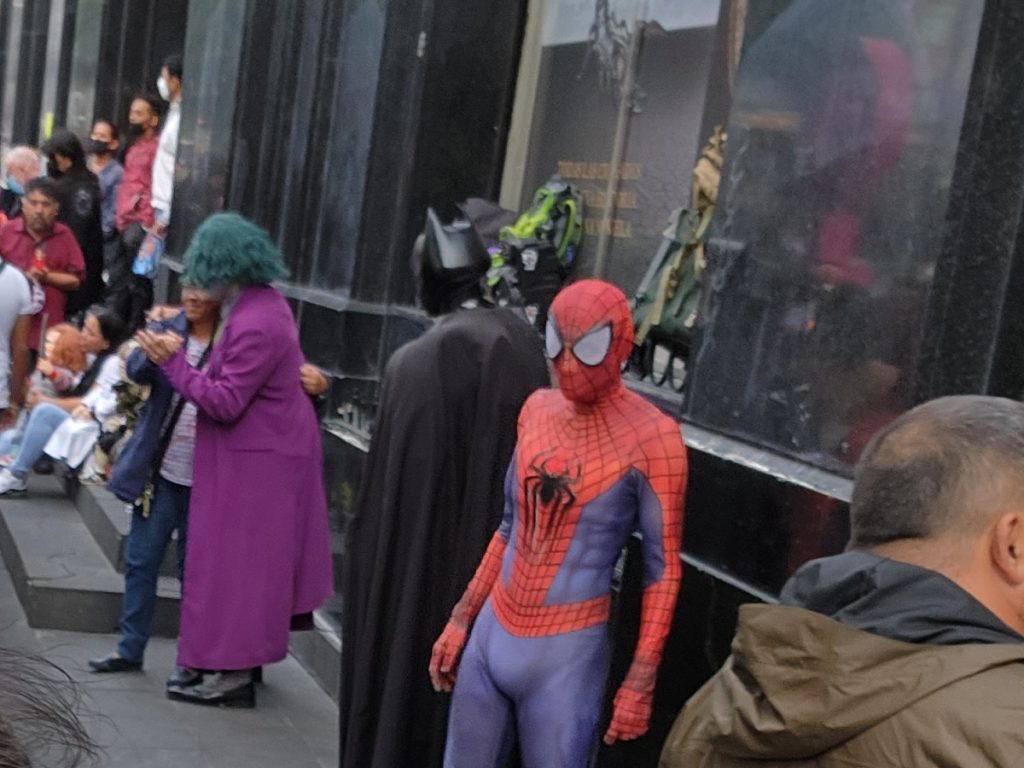
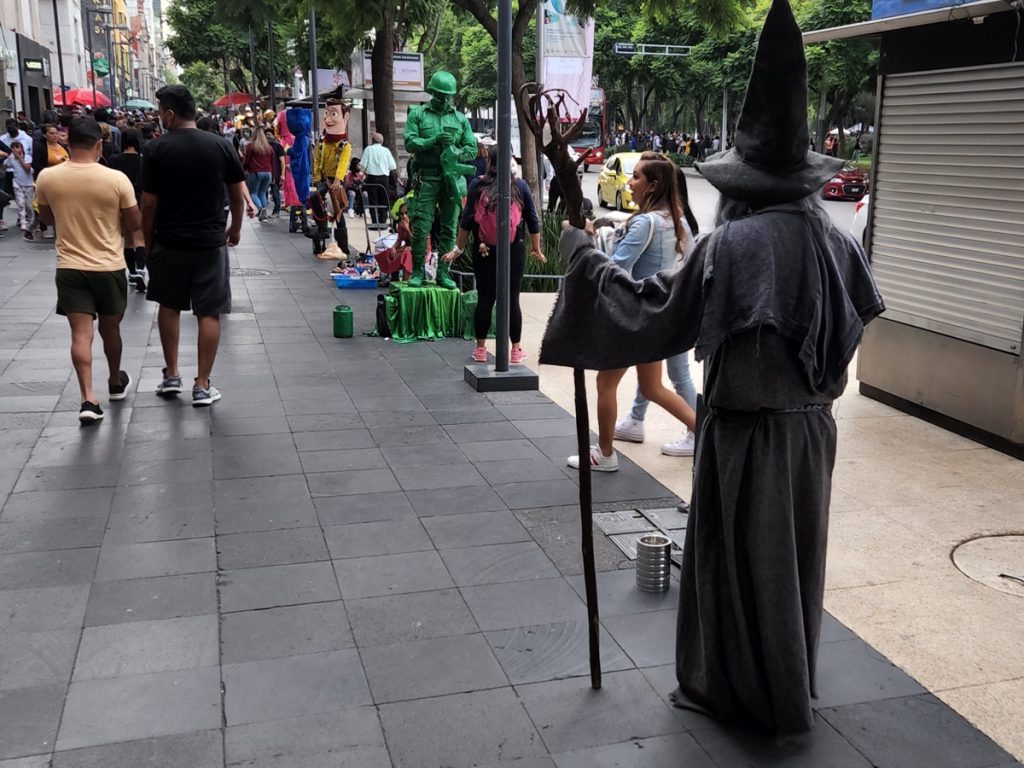
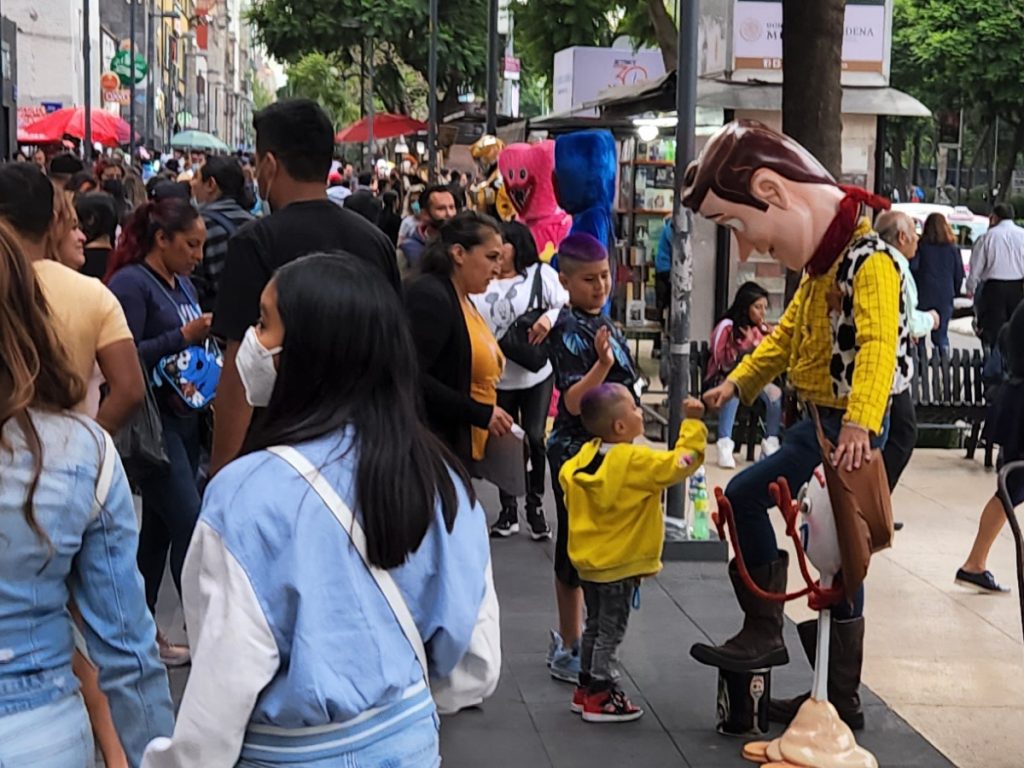
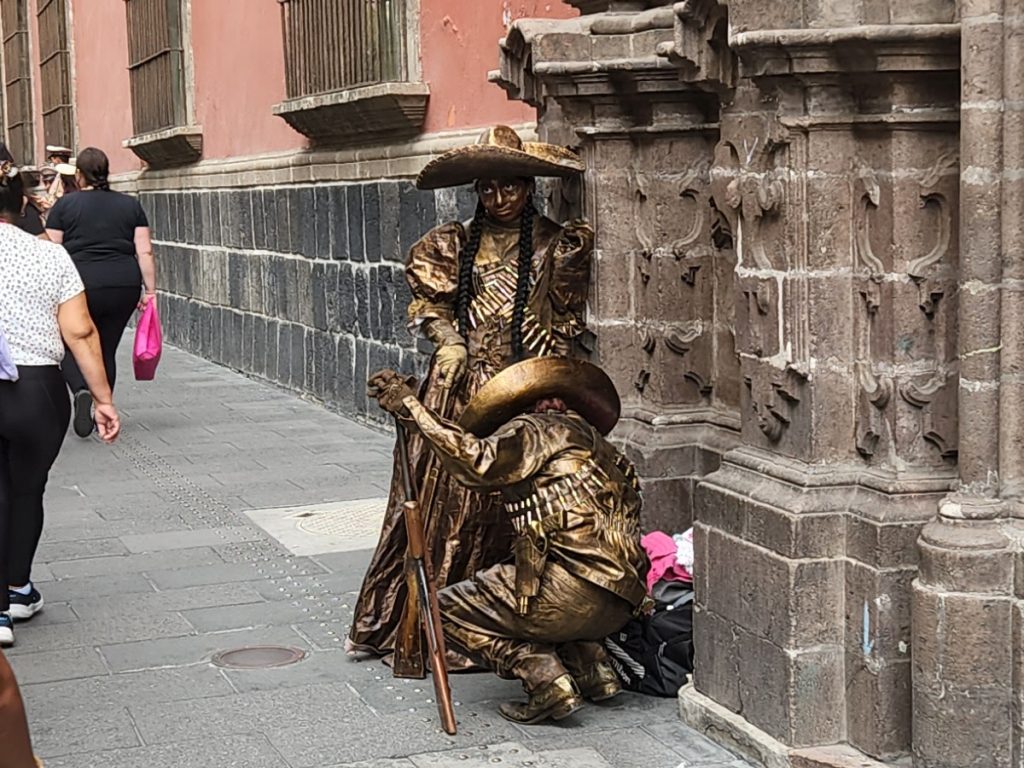
Another kind of artists would get in front of cars at the traffic light, pull some brief tricks, and attempt to collect money from the stopped traffic all before the light turned green again. Given the time (and probably skill) constraint, many of their tricks could hardly be considered performances. Thus they merely seemed to be dignified beggars, although they did make traffic light stops more interesting.
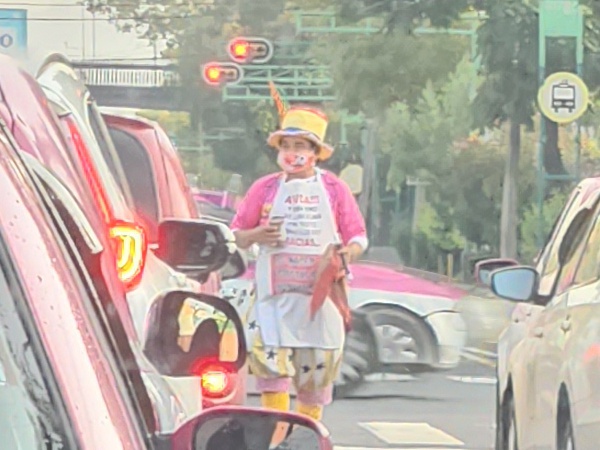

A uniquely Mexican phenomenon was people in uniforms cranking century-old music boxes called organilleros. They appeared to be soliciting certain nostalgia, and they often traveled in groups such that one person was turning the handle of the organillero while the other(s) asked passerby for money. It was all kind of fun, but these people belonged in a special category because all the organilleros sucked. Supposedly due to the lack of proper maintenance for many decades, every one of these instruments sounded like sixth-grade me practicing recorder – off beat and out of tune. The music that came out of these boxes contributed negatively to the enjoyment of the public space.
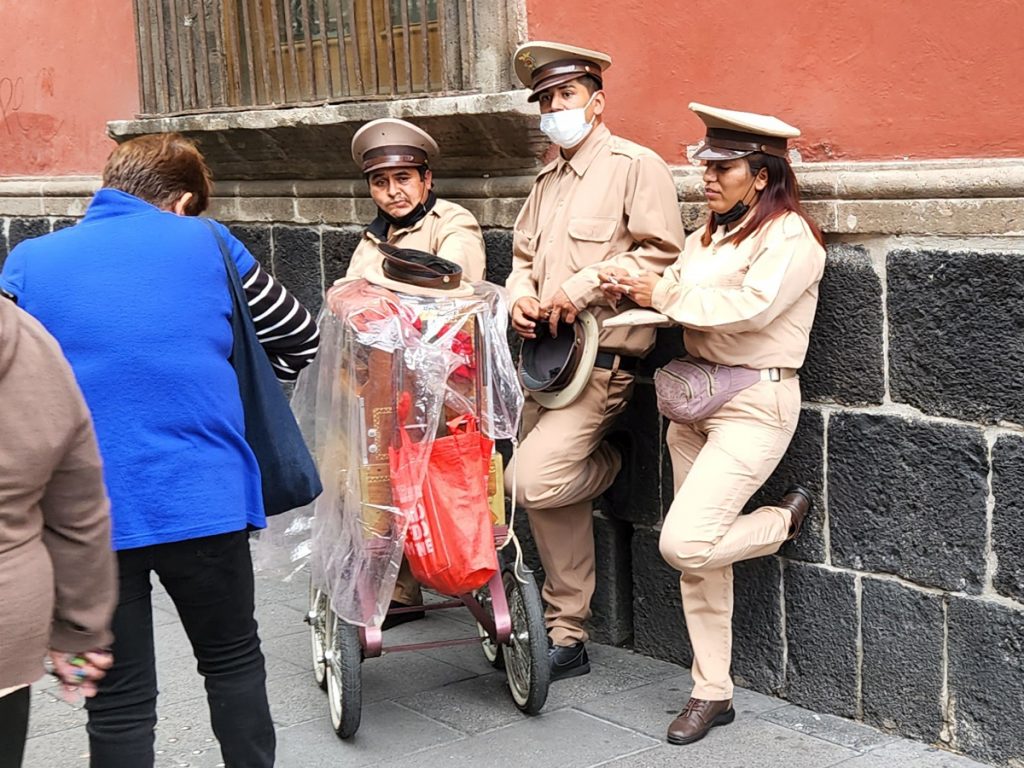
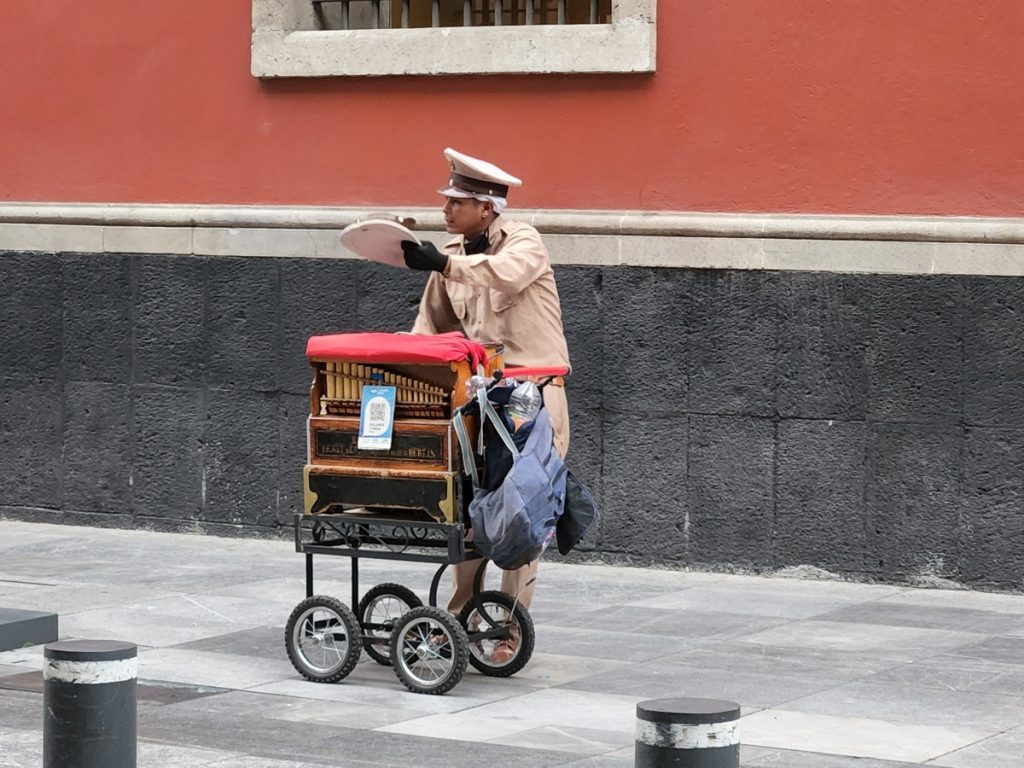
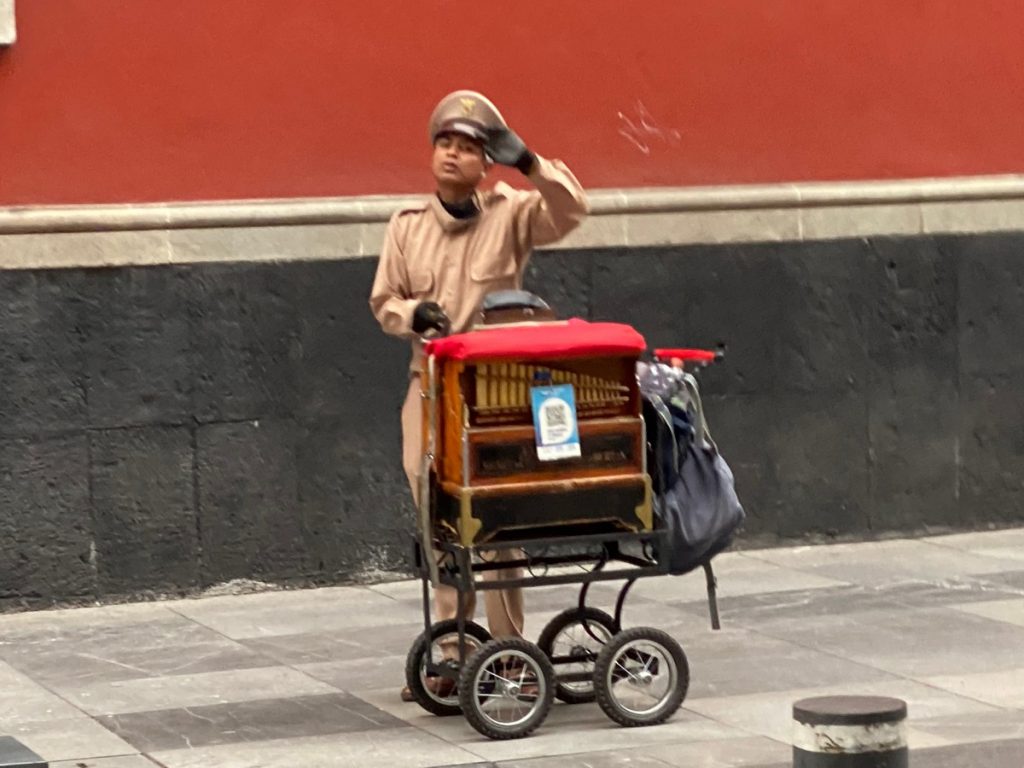
Public Workers
This city had a ton of cops – from those on active patrol in a pickup truck, to teams scattered watching over a neighborhood or an establishment. They were initially rather jarring, though we came to think that they were just a subset of the city’s army of public servants. We noticed that while some cops had serious defensive gear like helmets and shields, most of them didn’t carry weapons.
The other public workers cleaned and groomed the city. We saw a couple times very organized scrubbing and power washing of the sidewalks, and also came across a group manicuring a park. It was quite different from American cities where private property owners took care of their own sidewalks, often by pushing trash into the street.
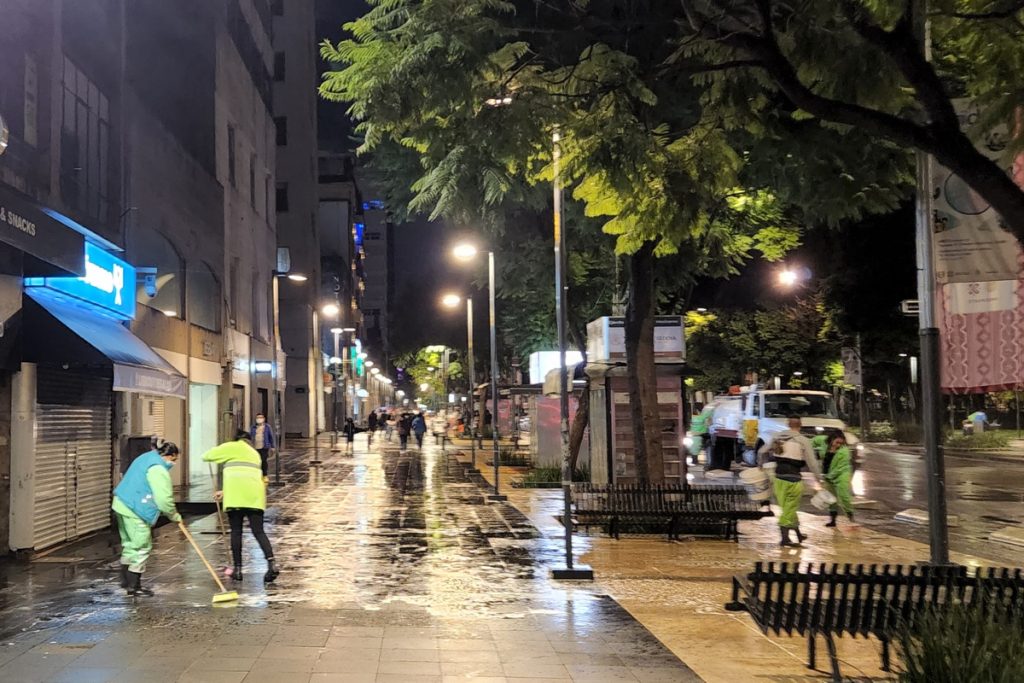
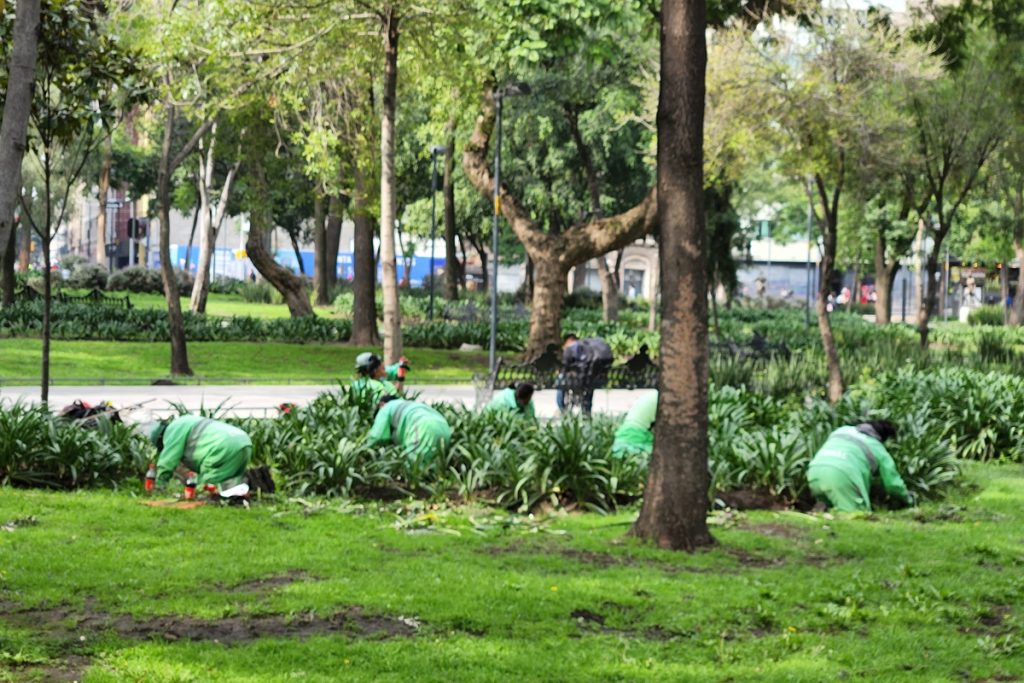
Tipping
Mexico was more like the United States than the rest of the world in that tipping was customary. We read about it before the trip but didn’t study this topic in detail, and frequently wondered if we did it properly. For example, even though we were entitled access to the hotel’s executive lounge, we were presented with a $0 bill with space for tips above the signature line. How do you tip on a $0 meal? I left what I considered to be a generous amount after each meal, but had no idea what the standard was. At restaurants, the waiter would bring the credit card terminal to our table and verbally ask us how much to add to the bill. Well, good luck getting that info out of me with a nonexistent Spanish vocabulary! Among all the reasons I hate tipping, it’s just plain silly to have a business model where your income depends on the customers’ implicit cultural understanding.
Faucets
In several public bathrooms, we found the following type of faucets. You’d need to push on the metal stick, in any direction, for the water to come out. It worked similarly to the sensor-based faucets found everywhere in the U.S., just with a mechanical twist. It felt funny having to touch something constantly while washing hands, but had the benefit of precise water control which sensor-based systems weren’t great at.

CDMX 2022 Trip Index

CDMX 2022 (1/8) – Day of Landing in Taco Heaven – Peter's Blog
September 5, 2022 at 8:25 pm[…] Random Observations […]
CDMX 2022 (2/8) – Day of Teotihuacan Pyramids – Peter's Blog
September 5, 2022 at 8:25 pm[…] Random Observations […]
CDMX 2022 (4/8) – Day of Instagram Destinations – Peter's Blog
September 5, 2022 at 8:26 pm[…] Random Observations […]
CDMX 2022 (7/8) – Food Adventures – Peter's Blog
September 8, 2022 at 11:23 pm[…] Random Observations […]